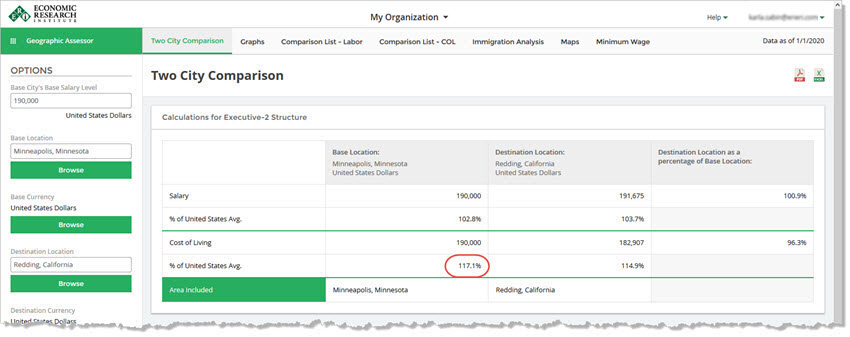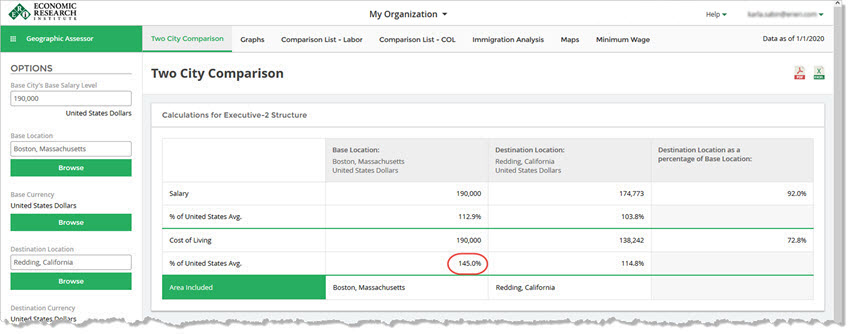QUESTION: When I use the same Destination Location, the same earnings level and different Base Cities, why do the values at the Destination Location change when the Base Location changes? Shouldn't the Destination Location values stay the same?
Consider the following example:

versus

The question, reworded for this example, would be: "Why aren't the Redding, CA values the same in both comparisons?"
The answer is that $190,000 buys you a different lifestyle in Minneapolis (your money goes further) than in Boston (where it buys you much less). You are comparing different spending patterns and different buying power when you change the Base Location, and it follows that the Destination Location costs will be different as well.
In the first comparison, $190,000 buys a lifestyle in Minneapolis that is 102.0% more expensive than the US National Average lifestyle. This translates into purchasing the equivalent of a $186,275 US National Average lifestyle. This comparison answers the question, what does it cost to buy a $190,000 Minneapolis lifestyle in Redding?
In the second comparison, $190,000 buys a lifestyle in New York-Manhattan that is 127.6% more expensive than the US National Average lifestyle. This translates into purchasing the equivalent of a $148,903 US National average lifestyle. $190,000 buys you a lot less in New York-Manhattan, and the spending pattern when New York-Manhattan is the Base Location will be very different than when Minneapolis is the Base Location. This comparison answers the question, what does it cost to buy a $190,000 New York-Manhattan lifestyle in Redding?
Please note: Buying power is the inverse of cost of living. Cost of living is the cost of purchasing goods and services, as determined by the demand and supply of goods, services, and property. For example, if the cost of living is 10% higher in an area, the buying power is approximately 10% less in that area.